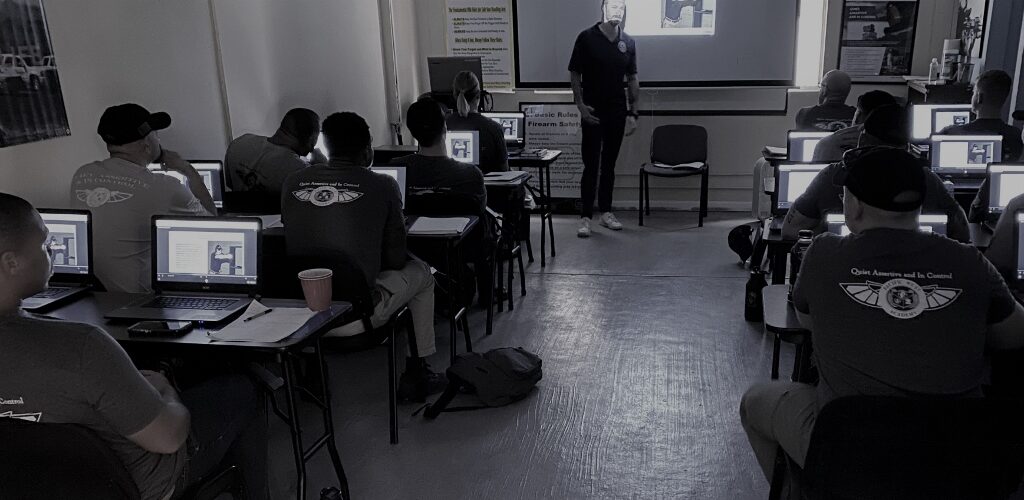

Threat Mitigation in an Executive Protection Environment
Threat Mitigation in an Executive Protection Environment
Close Protection professionals or “Bodyguards” have been documented as far back as 2300 years ago. The earliest documented professional protectors were specialized guard units made up of elite military personnel whose main job was to protect royal and religious leaders from physical harm. Today, protection professionals still exist, and are still protecting “at-risk” people from harm internationally.
When most people think of a bodyguard, they might imagine a tall, muscular man wearing a suit, poised to lash-out violently if anyone thinks about crossing the line with their client. But in reality, the majority of Close Protection agents are quiet, well trained professionals, whose main focus is avoiding potentially threatening situations. These men and women are well versed in threat prevention, de-escalation and mitigation techniques and tend to leave violence as a last resort. They normally have formal training, from an in several aspects of security including surveillance/ counter surveillance, behavioral analysis, medical care, martial arts, weapons training etc., but this in-depth education isn’t the only thing that sets todays EP professionals apart. Today, more than ever, CP professionals are providing a level of threat mitigation unrivaled by our predecessors from the past. We now have the ability to plan in a way that no longer forces us to be a solely reactionary force or a physical deterrent.
Prevention.
Prevention begins with a threat assessment. A threat assessment is the practice of determining the credibility and seriousness of a potential threat, as well as the probability that the threat will become a reality. A threat assessment is a dynamic concept that can constantly be changed and adjusted as your client’s environment and situation changes. Understanding your client and the environment in which you will be operating is paramount when trying to avoid potentially threatening situations.
It is important to gather as much pertinent information as possible, pre detail, in order to identify what we call red zones. Red zones are environments or locations in which you believe your client has a higher probability to encounter a threat. Once you have determined these areas, you need to plan, from a security standpoint, and try to avoid these areas whenever possible. It will not always be feasible to avoid these areas, but at least you have identified these sensitive locations and can now plan ways to deescalate or mitigate potential threats if they arise. Remember, a security detail that is “boring” or where “nothing happened” is a good detail.
De-escalation.
De-escalation is the act of reducing the intensity of a conflict or potentially violent situation. Without the ability to see into the future, even the best threat assessment cannot plan for every contingency. Even though you have done your due diligence and planned to try and prevent or avoid threatening situations, they may still arise. At this point, it is important to have the soft skills to de-escalate potentially dangerous altercations.
When a situation arises, a professional protector should make every effort to try to defuse the situation before it gets out of hand. Behavioral analysis and a thorough understanding of security tactics can be beneficial when trying to keep a situation from spiraling out of control. Remember, when working as a professional protector, the act of keeping your client safe should always trump your personal pride.
Mitigation.
Mitigation is the action of reducing the severity, seriousness, or damaged caused by something. Let’s be honest, the world is an unpredictable place, and prevention and de-escalation don’t always work. If you find yourself in a situation that cannot be either avoided or de-escalated, you must be able to use your training and skills to mitigate the amount of damage that arises. This is a rather broad topic and can be argued depending on the specific situation encountered.
Mitigating, from a Close Protection standpoint can involve a lot of things, ranging from evacuation to physical violence. No matter the situation, or the tactics that you are forced to employ, it is important to remember that your main focus is to limit the amount of damage done. Limiting the damage done by an attacker is an obvious goal, but you must also remember that you should also be trying to limit any collateral damage created by your actions. In any uncontrollable situation, your main goal should be getting the client to a safe location with the least amount of damage.
The Executive Protection industry is constantly evolving and changing with the times. At no other time in history has specialized security training and information been accessible to so many people. It is every professional’s responsibility to learn and study the different tactics, techniques and procedures (TTPs) that have been tried and proven by successful security professionals in the field. Having a thorough understanding of the information at your disposal will allow you to better plan details and to be successful while working these details. Remember, long gone are the days of bodyguards being a strictly reactive, physical deterrent. Prevention, de-escalation and mitigation may be the factors that keep your client alive or that keep you out of jail. Plan for the worst, hope for the best.
Pacific West Academy offers security training packages that revolve around Close Protection operations. Their instructors use a blend of training techniques involving hands on practical application/ field exercises in conjunction with a lesser amount of classroom learning. If anyone is looking for further professional development, or are new the industry and want to acquire a knowledge base in CP operations, feel free to check out Pacific West Academy.
